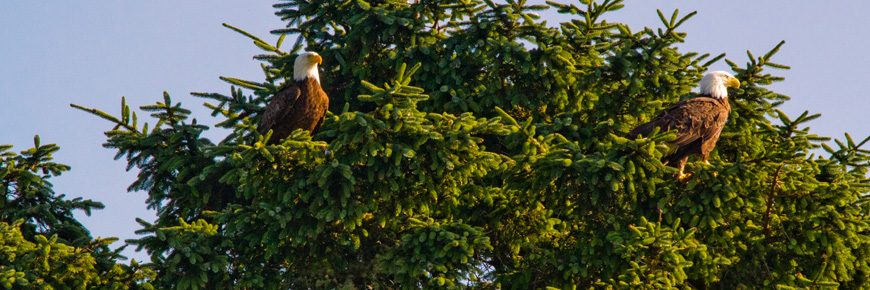
Bald eagle (Haliaeetus leucocephalus)
Pukaskwa National Park
Bald eagles nest in the park and are seen regularly. The adult bald eagle is a very large, dark brown to nearly black bird with a white head and tail. Its beak and legs are yellow. The immature bald eagle quickly attains adult size but doesn’t have the white head and tail of the adult until around five years of age. The bald eagle feeds mainly on fish, but will also eat carrion whenever possible. At times, bald eagles kill and eat birds, such as gulls and sea ducks.
Nests are usually in tall trees although they may occasionally be on cliffs; the nest is built of branches and sticks. As pairs of eagles return to the same nest year after year, adding to and maintaining it, nests can become very large. The female bald eagle lays 2 (rarely 3) eggs beginning in mid-April. Both the male and female actively hunt and care for the young.
The magnificent bald eagle, with a wingspan of over two metres, is the largest bird in this area. While not a species at risk, the bald eagle does have a high mortality rate. Close to 50% of eagles do not survive their first year. Eagle populations have recovered significantly from low numbers in the 60s and 70s when their reproduction rate was reduced as a result of the widespread use of the pesticide DDT.
Bald eagle status in Pukaskwa
The bald eagle is regularly seen in the park, particularly along the shoreline of Lake Superior.
Related links
- Date modified :